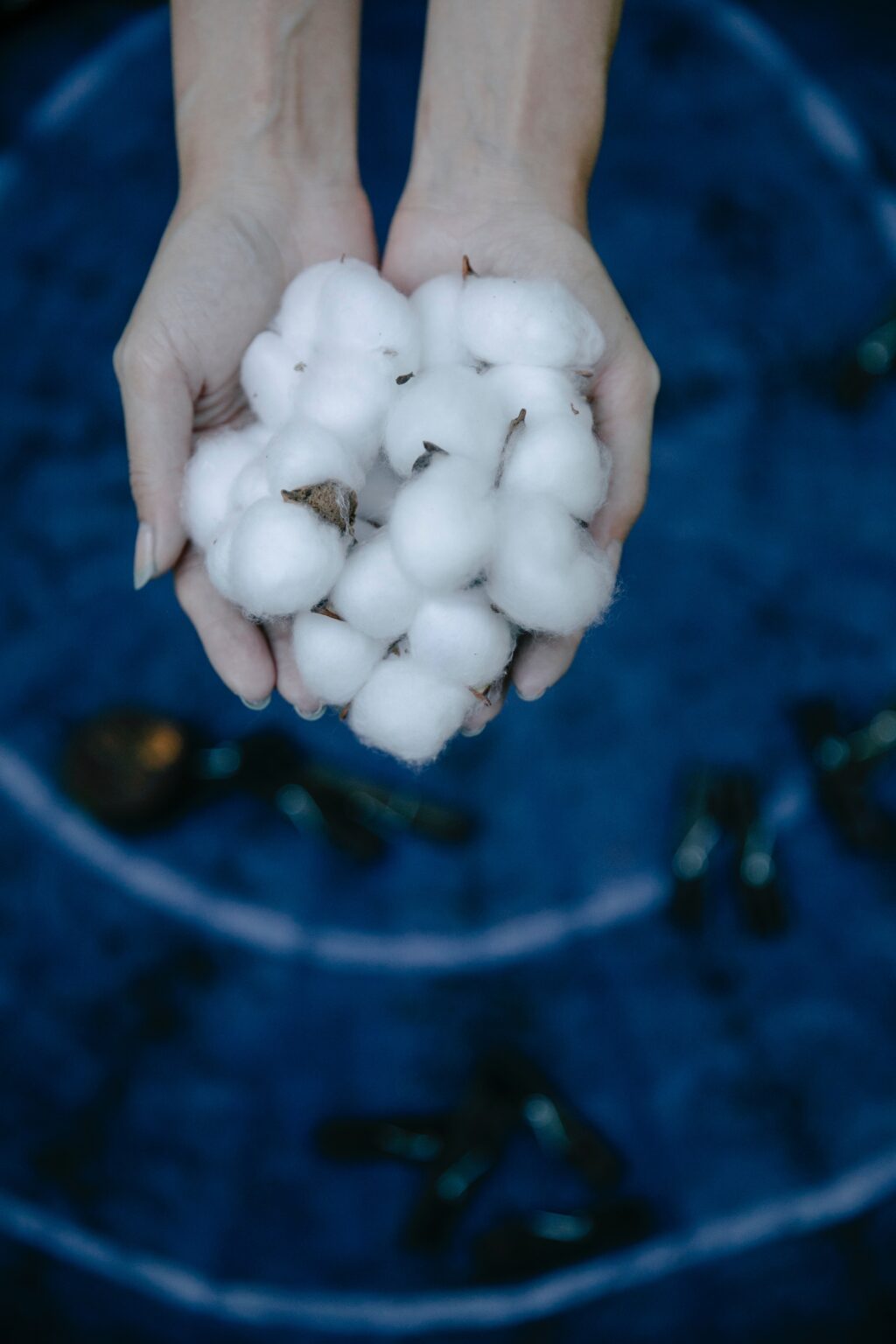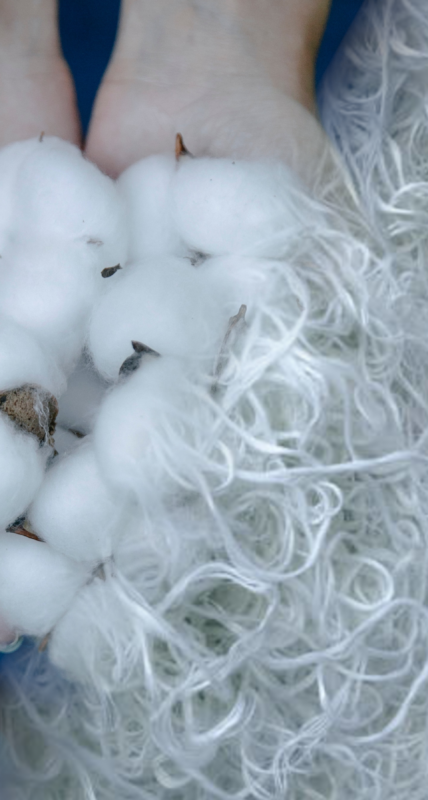Batting
Batting is the middle layer of a quilt, sandwiched between the top and backing fabrics. Your batting choice will affect many properties of your quilt, such as warmth, drape (the way it hangs), and ease of care. Below are the quilt battings we stock and their features.
NATURAL FIBRES
Cotton

Made from 100% cotton fibers, this batting is soft and breathable, making it a popular choice for quilts. Cotton batting does shrink with washing, leading to the crinkled look often associated with traditional quilts.
Pros:
- Comfort: Cotton batting is soft and comfortable, making it ideal for quilts that will be used for sleeping or snuggling.
- Non-allergenic: Cotton batting is unlikely to cause any allergic response.
- Cost-effective: Cotton batting is generally less expensive than other types of batting, making it a cost-effective option for large quilts or quilt projects on a budget.
- Breathable: Cotton batting is naturally breathable, which can help regulate body temperature and prevent overheating.
Cons:
- Heavy: Cotton batting is heavier than other types of batting.
- Limited loft: Cotton batting does not have as much loft as other types of batting, which can result in a flatter, less puffy, finished quilt.
- Shifting: Cotton batting may “bunch” during washing, particularly if the quilting is very spread out.
Bamboo

This batting is considered an eco-friendly choice, and is soft and breathable. It is also hypoallergenic and resists shrinking and creasing.
Pros:
- Eco-friendly: Bamboo is a renewable resource and is considered to be one of the most eco-friendly options for batting.
- Soft and lightweight: Bamboo batting is soft and lightweight, making it ideal for quilts that will be used for sleeping or snuggling.
- Breathable: Bamboo batting is naturally breathable, which can help regulate body temperature and prevent overheating.
Cons:
- Cost: Bamboo batting is generally more expensive than other types of batting.
- Eco-friendly? Bamboo requires a lot of complex processing to get it into batting form, so might not be quite as eco-friendly as suggested.
SYNTHETIC FIBRES
Polyester

Polyester batting is lightweight, hypoallergenic, and resists shrinking and creasing. It can be quilted less densely than some other battings and is easy to care for, making it a popular choice for bed quilts.
Pros:
- Cost-effective: Polyester batting is generally less expensive than other types of batting, making it a good option for those on a budget.
- Easy to care for: Polyester batting can be washed and dried in a standard washing machine and dryer.
- Resilience: It is very resilient and is known for its ability to maintain its shape and loft over time.
- Hypoallergenic: Polyester batting is hypoallergenic and does not contain any allergens that could trigger allergic reactions.
Cons:
- Heat retention: Polyester batting is not as breathable as natural fibers and can retain heat, which may make it less suitable for warmer climates or summer quilts.
- Limited drape: Polyester batting does not have the same drape and fluidity as natural fibers, which can result in a stiffer, less organic-looking finished quilt.
BLENDS
Blends of different batting types can offer the “best of both worlds”.
Poly-Cotton

This blend combines the softness and breathability of cotton with the durability and easy care of polyester. It can be a good choice for quilts meant for daily use.
Pros:
- Breathability: Cotton-polyester blend batting is known for its breathability, which can help keep you cool and comfortable while sleeping under a quilt.
- Cost: This blend batting is generally a fairly cost-effective choice.
- Loft: This blend of batting tends to have a higher loft than pure cotton alone.
- Durability: Cotton-polyester blend batting is generally more durable than all-cotton batting, making it a good option for quilts that will be used frequently or washed frequently.
Cons:
- Texture: Cotton-polyester blend batting may not provide the same level of softness as a pure cotton batting.
- Warmth: Cotton-polyester blend batting is not as warm as wool or all-cotton batting, which may not be ideal for colder climates or those looking for a warmer quilt.
